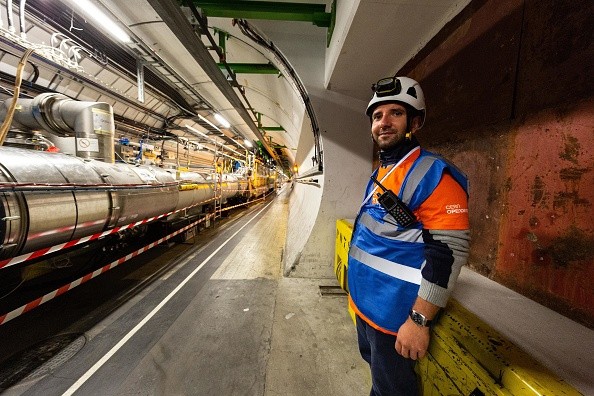
The European Organisation for Nuclear Research (CERN) officially blasted two proton beams on Friday, Apr. 22, at 12:16 CEST, according to its own press release, marking the first time its Large Hadron Collider has been utilized in nearly three years. The org took a bit of a break while its LHC, the world's largest and most powerful particle accelerator, underwent extensive maintenance and assorted upgrades to gear up for its forthcoming Run 3 iteration, the machine's third run that will see it recording payloads of data for the next four years.
CERN noted that some life was seen within the LHC in October of last year, citing a pilot beam circulation that didn't last too long for any major data collation. On the other hand, it expresses today's experiment, which saw two proton beams circulating the 27km ring in opposite directions at 450 billion electronvolts, as the next step in CERN's ever-expanding understanding of the universe.
"These beams circulated at injection energy and contained a relatively small number of protons," explains Dr. Rhodri Jones, CERN's Beam department lead. "High-intensity, high energy collisions are a couple of months away. But first beams represent the successful restart of the accelerator after all the hard work of the long shutdown."
The elongated closure over the past several years saw the LHC undergo "an extensive consolidation programme," said Mike Lamont, Director for Accelerators and Technology. Of major import for the team was the newly added "improvements in the injector complex," which will aid the team in collating even more necessary data.
Related Article: CERN Develops New Instrument To Hunt For Dark Matter
But enhanced efforts in physics-data collecting won't officially start until the summer of 2022. In the meantime, CERN's LHC will be worked tirelessly to ensure its operational status and gear it up for experimental collisions at energies of up to 13.6 trillion electronvolts, a record number for the machine.
"We are looking at very rare processes, so the greater the number of collisions, the greater the chance of actually finding what is going on and seeing small anomalies," Jones told BBC. "The improvement in the beam means that for all the physics that we have done since the start of the years the LHC has been in operation, we'll be able to get the same amount of collisions in the next three years as we did in those ten years."
For the CERN team, it's all about finding the physics world's holy grail, that being the fifth force of nature - if, of course, there is one. Currently, the four known to us as of yet are electromagnetism, gravity, and the two weak and strong nuclear forces. The aforementioned BBC article cites Dr. Sam Harper, CERN's CMS electron and proton head, in his giddy optimism as he states: "I've been hunting for the fifth force for as long as I've been a particle physicist. Maybe this is the year."
The team likewise hopes to uncover even more still unknown secrets about the universe, including the existence of Dark Matter, a supposed substance that makes up almost the entirety of the known cosmos. This is not to be confused with Dark Energy, yet another conundrum in the realm of physics that, as of yet, mainly is theorized to be an outward thrusting form of power that theoretical physicists thus far consider being the antithesis of Dark Matter.
It remains to be seen just how much CERN and its LHC can test the limits or even entirely smash through the current Standard Model of physics, but its continued efforts certainly prove worthwhile. LHC's Run 3 will likewise attempt to study what's called the Higgs boson, a ten-year old particle discovery that hinders on a still unseen concept called electroweak symmetry, which requires force-carrying particles to have no mass - a veritable conundrum that CERN will hope to unravel in the next four years' time.
ⓒ 2025 TECHTIMES.com All rights reserved. Do not reproduce without permission.




